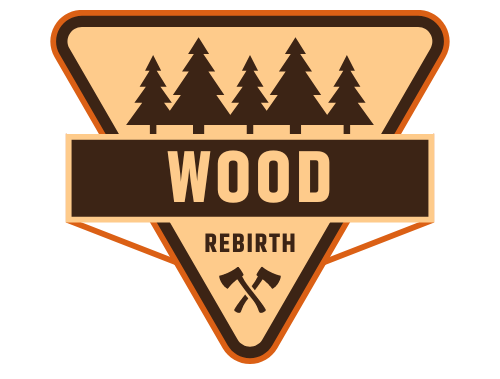Have you ever wondered what can be done with waste wood? Surprisingly, there are endless possibilities. From furniture and flooring to energy production and even clothing, waste wood can be turned into something useful and valuable. In this article, we will explore the innovative ways in which waste wood is being repurposed and transformed, offering eco-friendly solutions and reducing our reliance on traditional materials. Get ready to be amazed by the incredible potential of waste wood!
Furniture
Tables
When it comes to waste wood, one of the most versatile options is to repurpose it into tables. Whether it’s large dining tables or small side tables, using waste wood not only reduces the demand for new timber but also adds a unique character to your furniture. With a little creativity and some woodworking skills, you can turn discarded pieces of wood into beautiful and functional tables that will complement any room in your home.
Chairs
Another exciting way to make use of waste wood is by creating chairs. From simple dining chairs to more elaborate lounge chairs, the possibilities are endless. By repurposing waste wood, you not only contribute to the environment but also get the opportunity to add a personal touch to your furniture. With some basic tools and a bit of imagination, you can transform scraps of wood into comfortable and visually appealing chairs.
Bookshelves
Book lovers rejoice! Waste wood can be transformed into bookshelves, providing both a functional storage solution and a unique decorative element. Create your own custom bookshelves by repurposing discarded wood planks or even old pallets. By giving waste wood a new lease on life, you not only cater to your organizational needs but also make a positive impact on the environment.
Home Decor
Picture frames
Decorating your walls with photos and artwork is a great way to personalize your living space, and what better way to showcase them than using picture frames made from waste wood? By repurposing old or leftover wooden materials, you can create one-of-a-kind picture frames that add a rustic and charming touch to any room. Embrace the imperfections and unique characteristics of the wood to create frames that truly stand out.
Coasters
Protect your furniture while adding a touch of natural beauty with waste wood coasters. Utilizing scraps or small pieces of wood, you can create unique and stylish coasters that are not only functional but also environmentally friendly. With a little sanding, staining, and sealing, these coasters will be ready to hold your favorite beverages and add a touch of rustic elegance to your home.
Wall hangings
To add a focal point to your walls, consider repurposing waste wood as wall hangings. From simple wooden signs to intricate art pieces, the possibilities are endless. Whether you’re a fan of minimalist designs or prefer a more eclectic style, waste wood wall hangings can be customized to match your aesthetic. Get creative with paint, stains, and embellishments to create visually stunning pieces that reflect your personality.

Garden and Outdoor
Planters
Gardening enthusiasts can put waste wood to good use by creating planters. Transform discarded crates, pallets, or even old furniture into stunning containers for your favorite plants. Not only will this help reduce waste, but it will also add a charming touch to your garden or outdoor space. Get crafty with your designs, from vertical herb gardens to raised bed planters, and enjoy the satisfaction of giving new life to waste wood while nurturing your green thumb.
Fences
If you’re in need of a new fence, consider repurposing waste wood to create a unique and environmentally friendly barrier. By using reclaimed wood, you can reduce the demand for new lumber while adding a touch of rustic charm to your property. Whether you opt for a sleek modern design or embrace a more traditional look, a waste wood fence can enhance the aesthetic appeal of your outdoor space while minimizing your environmental impact.
Decking
Transform your outdoor living area by repurposing waste wood into decking. Whether you have a small patio or a spacious backyard, using waste wood to build your deck adds a touch of eco-friendly elegance to your outdoor environment. From budget-friendly pallet decking to more intricate designs, waste wood decking provides a sustainable and visually appealing solution for creating a relaxing and inviting outdoor space.
Pallets
Pallet furniture
Pallets, often discarded as waste, can be transformed into unique furniture pieces. From outdoor seating to coffee tables, pallet furniture offers a cost-effective and sustainable alternative to traditional options. By upcycling this abundant waste material, you can create custom-made furniture that suits your style and contributes to a greener planet.
Pallet art
Unleash your creativity by repurposing pallets into art pieces. Whether it’s a large wall mural or a small decorative item, pallet art adds a rustic and whimsical touch to any space. From painting and carving to assembling different pallet pieces, the possibilities for pallet art are endless. Show off your artistic side and give new life to waste wood by creating captivating and unique artworks.
Pallet garden
For those with limited space, pallet gardens offer a practical and creative solution. By repurposing pallets as vertical planters, you can maximize your gardening potential while minimizing the use of new materials. Pallet gardens not only allow you to grow herbs, flowers, and small vegetables in a compact area, but they also add a touch of natural beauty to balconies, patios, or even inside your home. Embrace sustainability by utilizing waste wood to create your very own pallet garden.

Wooden Toys
Building blocks
Engage your imagination and reduce waste by making building blocks out of waste wood. From simple square blocks to more intricate shapes, repurposing wood into toys provides endless possibilities for play and creativity. Whether you’re making them for your own children or as gifts for others, wooden building blocks offer durability and a tactile experience that plastic alternatives often lack.
Puzzles
Challenge your mind and promote sustainability by creating wooden puzzles from waste wood. From jigsaw puzzles to brain teasers, repurposing wood into unique puzzle designs provides entertainment for people of all ages. With a bit of woodworking skills and some patience, you can craft puzzles that engage the mind and bring joy to both children and adults alike.
Dollhouses
Create a magical world for children by repurposing waste wood into dollhouses. From cozy cottages to modern mansions, the possibilities for designing and customizing dollhouses are limitless. By reserving waste wood from landfills, you not only contribute to environmental conservation but also provide a timeless toy that promotes imaginative play and storytelling.
Crafts and DIY Projects
Storage boxes
Enhance your organization skills and reduce waste by repurposing wood into storage boxes. From small trinket boxes to larger storage chests, waste wood can be crafted into practical and visually appealing storage solutions for any room in your home. Whether you need a place to store jewelry, keepsakes, or everyday items, customized storage boxes created from waste wood add charm and functionality to your living space.
Jewelry holders
If you’re looking for a creative and sustainable way to store your jewelry, repurposing waste wood into jewelry holders is a fantastic option. From simple earring displays to multi-tiered necklace stands, waste wood jewelry holders offer both functionality and visual appeal. Showcase your favorite accessories while reducing waste and adding a unique touch to your dressing area.
Keychains
Turn waste wood into personalized keychains that reflect your style and give a nod to sustainability. Whether you opt for simple wooden discs or more intricate shapes, repurposing waste wood into keychains provides a practical way to keep your keys organized. Not only will you be less likely to misplace your keys, but you’ll also be reminded of the importance of repurposing materials for a more sustainable future.
Firewood
Waste wood can serve a practical purpose when it comes to providing warmth during colder months. Unusable or damaged wood can be transformed into firewood, keeping you cozy while reducing waste. By properly drying and storing waste wood, you can ensure a consistent and sustainable source of fuel for your fireplace, wood-burning stove, or fire pit.
Biofuel
Innovations in renewable energy have opened up new possibilities for waste wood. It can be processed into biofuel, serving as a sustainable alternative to fossil fuels. By converting waste wood into biofuel, you contribute to reducing greenhouse gas emissions and dependence on non-renewable energy sources. Embracing biofuel from waste wood not only benefits the environment but also supports the development of a greener and more sustainable energy landscape.
Wood Chips
Wood chips derived from waste wood have various applications. They can be used as mulch in gardens and landscaping, providing insulation, improving soil moisture retention, and suppressing weed growth. Additionally, wood chips can serve as bedding material for livestock, helping to create a comfortable and hygienic environment. By repurposing waste wood into wood chips, you contribute to sustainable agricultural practices and reduce the need for synthetic materials.
Composting Material
Waste wood, such as sawdust and wood shavings, can be a valuable addition to compost piles. They help create a balanced carbon-to-nitrogen ratio, which is crucial for successful composting. Incorporating waste wood into your compost helps break down organic matter, enriches the soil with nutrients, and promotes a healthy environment for beneficial microorganisms. By composting waste wood, you close the loop and return it to the earth in a way that benefits both your garden and the planet.

Hi, I’m James Gheen, the creator behindWoodRebirth.com. As someone passionate about sustainability and environmental stewardship, I created this pioneering online platform to change how we approach wood waste and pallet disposal. Through detailed recycling and disposal guides, creative DIY projects, and upcycling inspirations, I aim to inspire individuals and businesses to adopt eco-friendly practices in their wood waste management. At WoodRebirth.com, we foster a vibrant community focused on education and engagement, encouraging the sharing of ideas and success stories. Join me in our mission to give wood waste a new lease on life, making a tangible impact on our environment, one pallet at a time.

